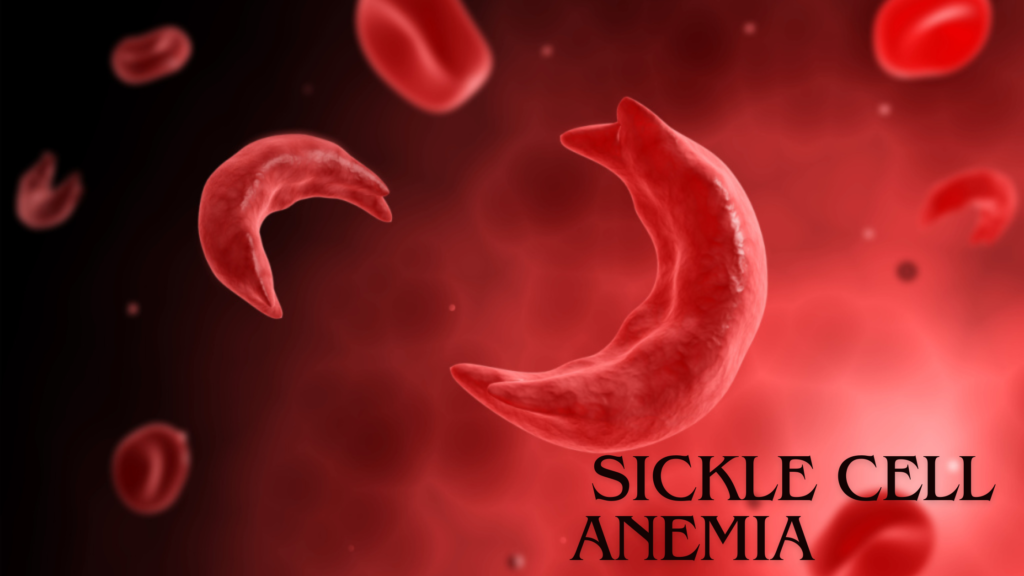Certainly! Here’s a comprehensive yet clear overview of Sickle Cell Anemia:
🩸 Sickle Cell Anemia (SCA)
Overview
Sickle Cell Anemia is a genetic blood disorder where red blood cells become abnormally shaped (like sickles or crescent moons). This causes them to clump together, block blood flow, and break down more easily, leading to anemia, pain, and other serious complications.
🧬 Cause
- Genetic Mutation: SCA is caused by a mutation in the HBB gene, which tells the body how to make hemoglobin (the protein in red blood cells that carries oxygen).
- People with two sickle cell genes (HbSS) have sickle cell anemia.
- People with one sickle cell gene and one normal gene (HbAS) are carriers (sickle cell trait) and usually don’t have symptoms.
🌍 Who is Affected?
- Most common in people of African, Mediterranean, Middle Eastern, and Indian ancestry.
- It’s estimated that millions are affected worldwide, with hundreds of thousands of new cases each year.
🩺 Symptoms
Symptoms usually begin around 5-6 months of age and vary in severity.
Common Signs:
- Chronic anemia (fatigue, pale skin, shortness of breath)
- Pain episodes (“sickle cell crises”) – sudden pain in the chest, joints, or bones
- Swelling in hands and feet
- Frequent infections (due to spleen damage)
- Delayed growth or puberty
- Vision problems
- Jaundice (yellowing of skin or eyes)
🔍 Diagnosis
- Newborn screening (routine in many countries)
- Blood tests:
- Hemoglobin electrophoresis (confirms sickle cell type)
- Complete blood count (CBC)
💊 Treatment
While there is no universal cure, treatments help manage symptoms and prevent complications:
Daily Management:
- Hydroxyurea: Increases fetal hemoglobin and reduces sickling.
- Pain management: Medication for sickle cell crises.
- Folic acid supplements: Help with red blood cell production.
Prevention:
- Vaccinations and antibiotics: To prevent infections.
- Regular blood transfusions: For severe cases or to prevent stroke.
Advanced Treatments:
- Bone marrow or stem cell transplant: Potential cure, but usually only for children with a matched donor.
- Gene therapy: Experimental, but promising results in clinical trials.
⛑️ Complications
- Stroke
- Acute chest syndrome
- Organ damage (liver, kidney, heart)
- Gallstones
- Priapism (painful, prolonged erections)
🧬 Living with Sickle Cell Anemia
- Lifelong condition that requires ongoing care.
- Life expectancy has increased significantly with proper treatment — many now live into their 40s, 50s, or longer.
- Support networks, patient education, and access to healthcare are crucial.
